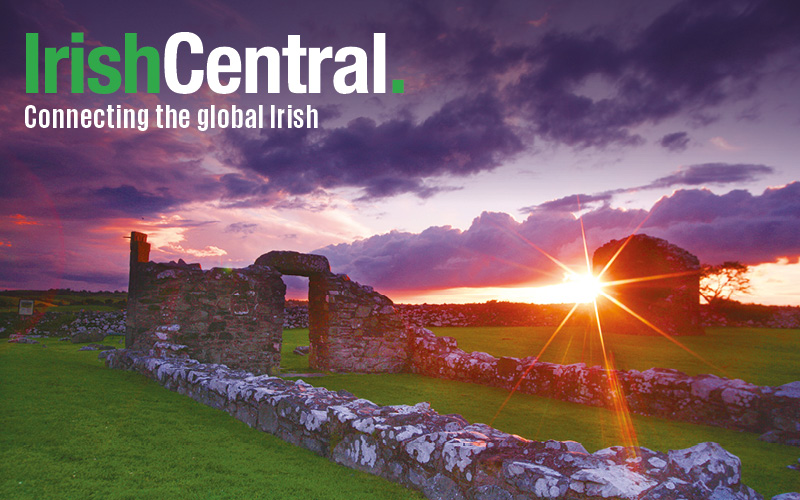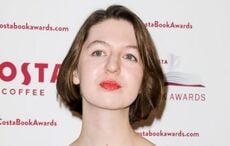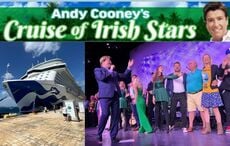Uncovering hidden histories is an Irish specialty since colonial conquest has left us to uncover so much of our own from the forces that tried to suppress it
Celebrated Irish-American historian and writer, Hugh Ryan, knows all about it. In his groundbreaking new history of LGBT Brooklyn titled "When Brooklyn Was Queer," he has uncovered 111 years worth of hidden LGBT history (quite a bit of it sporting an Irish accent).
If you could ask your great-great-grandparents generations about their history, they would probably tell you that they were so busy trying to survive that they rarely availed themselves of the opportunity to write it down.
Famine, civil war and economic crisis kept them busy.
For that reason, and more besides, there are few people as tenacious as an Irish historian. When all the main sources have been marginalized or suppressed most historians will quietly abandon a project, but Irish ones have learned to simply roll up their sleeves.
Read more: Meet the Kerry woman redefining the immigrant story for LGBTQ Irish in New York

Author Hugh Ryan has written a groundbreaking study on the queer history of Brooklyn
Hugh Ryan is a case in point. Back in 2011, he launched a Pop-Up Museum of Queer History to help local communities across the U.S. explore the LGBT past here, but in doing so he quickly discovered that in his own borough of Brooklyn no such history existed.
There wasn't a single book on the subject. For a borough as old and as central to the story of the city and the nation as Brooklyn, it seemed an incredible oversight.
“I was working with a group on local history and what we learned about Brooklyn was that no one had anything to say about it,” Ryan tells the IrishCentral.
“Everyone knew about the poet Walt Whitman (who kept detailed lists of the names and characteristics of the many Irish laborers he picked up, making them immortal). They maybe knew that Park Slope had a lesbian history in the 1980s and 1990s and maybe they even knew about the street cruising in Prospect Park but that was it. We found that we couldn't actually do a show because there was just so little knowledge and that's what started me on the book.”
Read more: How Brooklyn’s St Patrick’s Day Parade showcases the changing culture in Irish America

Ryan's own family is “as Irish as you can possibly get,” he says. “My family lives in Westchester now but my dad was from Inwood and my mom was from the Bronx. My dad said that when he was younger they were in Hell's Kitchen amid the last vestiges of the Irish neighborhood there. And my mom's entire family, her mother and three of her sisters, all came over from Ireland in the 1920s and all settled in the same area and then had children who settled in the same area.”
What worried Ryan when he started his new book was the thought perhaps Manhattan had stolen all the best stories, he confesses.
“There is this longstanding dynamic between Brooklyn and Manhattan and my concern was that maybe the way it played out was that most of the organized gay life happened in Manhattan and that's why they're just there aren't these records, you know.”
That worry led to extensive research for the first few years, trying to figure out if there was anything to see, and if so, was it something worth talking about?
“I was lucky in that I was working as a freelance journalist. I was able to interview a lot of people who had information that was at least related to what I was doing.”
Any time he would do an interview for any piece Ryan would ask the interviewee, “Hey, do you know anything about the queer history of Brooklyn?” And then he would just scribble down notes. For the first few years, he would pin those little notes to a timeline to see for himself what was there.
The big change came when the New York Public Library gave him a fellowship to do further queer research in 2015. “And the first thing they said to me was when you're done with your fellowship, you should have your book proposal done too. They thought I had enough material for a book and I knew that was a good sign.”

Author Hugh Ryan has written a groundbreaking study on the queer history of Brooklyn
Much of the information that Ryan found, the sources for a good deal of the book's histories, were recorded by people who were actually hostile to LGBT rights he admits. In particular from the mid-1940s onwards, when there was a marked hardening of attitudes towards gays.
“A lot of the records that I got are from police, doctors, moral societies, people who are looking at queer people either because they thought they were a problem or were looking at a different problem and while looking at that problem found queer people.
“So there are always these not very neutral records. One of the things that they talk a lot about in queer history is reading against the archive. The archive is trying to tell you one set of information where people were arrested or something like that, and you can use that to figure out where the queer community actually is.”

The Brooklyn Bridge in the 19 century
At the start of the 20th century, a self-appointed moral society in New York arose and called themselves The Committee of 14. Their records were a treasure trove.
“It's the creepiest name. They're rich and they're busybodies. And they have so many paid informants that they produced reams and reams of notes and papers. I mean they just loved minutes and reports. And that was so useful for me.”
Eventually, the U.S. Army got involved in the growing anti-gay prosecutions and those notes become very useful too, as did the courts, he says. “I mean the courts have been involved in policing LGBT sexuality forever, but in the 1950s they formed a partnership with this Committee of 14.”

Morality police in the 1920's arrest young women for wearing obscene bathing costumes.
People nowadays have the idea that the kinds of ruthless anti-gay persecution that were seen in the 1950s were a general benchmark of the homophobic past, but the truth it the 1950s was really the aberration, not the other way around.
“What I think is really interesting is that in the earliest period that I'm writing about in the 19th century there isn't this certainty about sexuality at all. I mean it takes until the end of the Victorian era for psychologists to separate sexuality from gender. The term homosexuality isn't even coined until 1860 and it takes a long time for the idea to spread. It's not that queer people are nonexistent, it's just they don't think about it as existing solely in terms of who you are attracted to.”
Doesn't what Ryan's doing in LGBT research often parallel the Irish experience, because our history was suppressed and often erased too? It's interesting that an Irish American is prominently leading this imaginative act of reclamation.
“I definitely learned it from my Irish family that we had to reclaim and work against the Irish history given to us by British historians. For example Roger Casement was a hero in my family and in British history he's portrayed as a traitor you know.”

Ryan says he initially wrote his acclaimed history of LGBT Brooklyn because he wanted a mirror. “I wanted to see myself and to say I exist and I have always existed and that was part of the initial attraction. But the more that I did this the more I realized that that's actually kind of a problem."
“We can't just look to history for a mirror because then we won't see what's actually there, we'll just see ourselves. What I actually started to realize is that history was a window, a distorted window. The further you go back or away from your own context the less what you're seeing is actually about you and the more it is about them."
“And that became the most freeing thing. The more I could see that the world had once been organized differently, the more I could imagine the future could be different too. And that's what's so exciting about looking at queer history for me, it says even things you think are baseline obvious now like the sexuality, a hundred years ago people didn't agree, it was totally different. So things can and do change.”
Meanwhile, Ryan confesses his grandmother would have been delighted to see his name in The Irish Voice.
“Just like when I got invited to the St. Patrick's Day breakfast at Gracie Mansion this year and my parents were over the moon. My father put my grandfather's medals from the Roscommon Society in an overnight FedEx package to me. So even though the event was like two weeks away I would be sure to have my grandfathers medals when I went to Gracie Mansion.”
For Ryan, like his book, the past isn't prologue, it isn't even the past - and he's on it.
"When Brooklyn Was Queer" by Hugh Ryan is available form St Martin's Press, $29.99.
Looking for Irish book recommendations or to meet with others who share your love for Irish literature and writers? Be sure to join the IrishCentral Book Club here and enjoy our book-loving community.




Comments